
History
The colorful displays of the Siamese fighting fish have captivated people’s attention for thousands of years. Commonly known as Bettas, these fish originated in the rice paddies, stagnant ponds, and gentle streams of Southeast Asia. In Thai, they are known as pla kat, which means "tearing" or "biting fish" Even before the 1800s, the people of Siam were collecting these fish for their fighting abilities. For Malayan children in southern China, catching these fish was a favorite pasttime. Once caught, the children would fight their fish to see who was the village champion. However, with the advent of mechanized plowing and chemicals, this pasttime quickly faded away. Adults also participated in fighting the fish, except they often placed bets on who would win. Wagers for these bets ranged from large sums of money to houses and family members.
The King of Siam quickly caught on to the popularity of these fights. As a result, he began collecting and licensing the fighting fish. In 1840, he gave one to a visitor, who in turn gave it to a scientist named Dr. Theodor Cantor. A few years later, Dr. Cantor wrote an article on the fish and named it Macropodus Pugnax. In 1909, Mr. Tate Regan renamed the species Betta Splendens because there was a fish with that name already. Mr. Regan apparently named the fish after a warrior-like tribe named "Bettah". This is where the common name, Betta, is from.
Biology
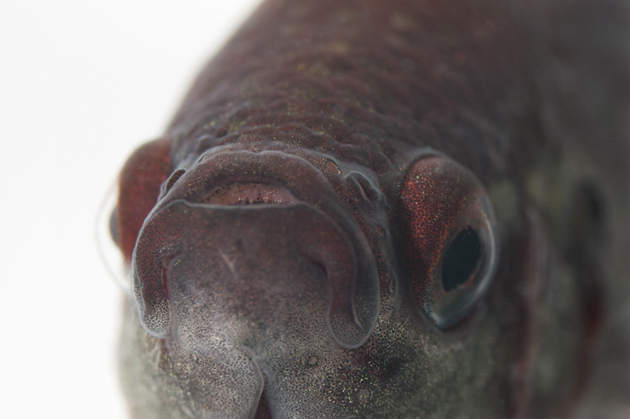 Bettas have upturned mouths, which aid the fish in surface feeding. The inside of the mouth is lined with rows of tiny pointed teeth. These teeth, in combination with powerful jaws, make tearing at prey quite easy. Bettas are primarily carnivores, feeding on zooplankton, insects, and larvae with occasional consumption of vegetable matter. While kept in captivity, the fish are usually fed commercial fish food. These flakes or pellets are composed of mashed shrimp meal, wheat flour, fishmeal, brine shrimp, bloodworms, and vitamins. However, live or frozen bloodworms, mosquito larvae, brine shrimp, or daphnia can suffice for a meal. The upturned mouths are designed to blow bubbles, which are used to construct bubble nests. These bubble nests are a key part of the spawning process. During the spawning process, the male uses his mouth to catch all of the eggs and deposit them into the bubble nests.
Bettas have upturned mouths, which aid the fish in surface feeding. The inside of the mouth is lined with rows of tiny pointed teeth. These teeth, in combination with powerful jaws, make tearing at prey quite easy. Bettas are primarily carnivores, feeding on zooplankton, insects, and larvae with occasional consumption of vegetable matter. While kept in captivity, the fish are usually fed commercial fish food. These flakes or pellets are composed of mashed shrimp meal, wheat flour, fishmeal, brine shrimp, bloodworms, and vitamins. However, live or frozen bloodworms, mosquito larvae, brine shrimp, or daphnia can suffice for a meal. The upturned mouths are designed to blow bubbles, which are used to construct bubble nests. These bubble nests are a key part of the spawning process. During the spawning process, the male uses his mouth to catch all of the eggs and deposit them into the bubble nests.
Both male and female fighting fish have similar anatomy, with the same cylindrical shape. The only real difference is the size of the fins and tail. Males tend to have much larger fins than females. For example, males have pelvic fins that are longer and more extended than females. When splayed out, the anal and caudal fins billow out, resembling a large fan. However, when at rest the fins hang down, giving the appearance of folded drapes. Usually, Bettas grow to a length of 5 cm.
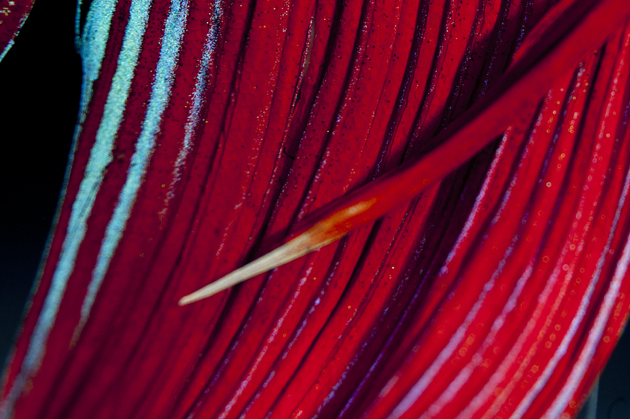
Selective Breeding
Unlike today’s Bettas, natural Siamese fighting fish had significantly smaller fins and duller colors, often a dirty green-brown. Originally, people started collecting and raising the small fish for competitive fighting. Selective breeding within the species first emerged when owners sought to raise the best fighters. Since pitting these fish against each other is an ethical 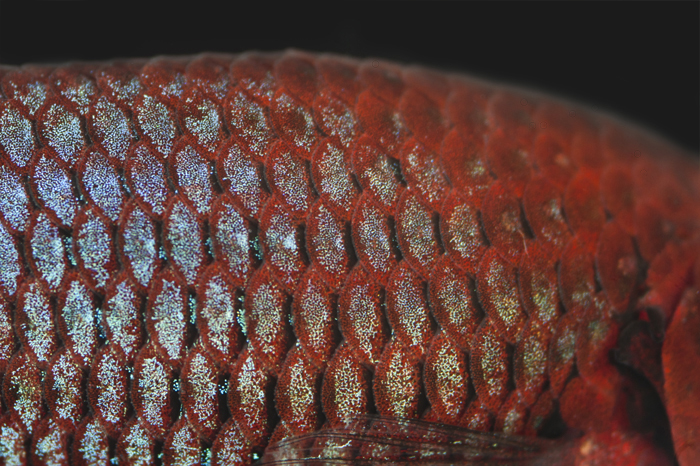 matter, breeders have turned their skills to producing fish with brilliant colors. Today, there are many different types of Siamese fighting fish. Possible colors for these fish include: red, blue, tangerine, turquoise, orange, yellow, green, cream, white, and bright blue with pink highlights. Interestingly, the blue, turquoise, and green shades are slightly iridescent. When viewed from different angles or in different lighting conditions, these colors appear to shift or change. This is due to the fact that these colors are not due to pigments on the fish. Rather, they are the result of light being refracted within a layer of translucent guanine crystals on the scales of the fish. Some breeders have even achieved patterned fish, such as marble and butterfly, and metallic shades of copper, gold, and platinum. The tails and fins of the beta can also be altered through selective breeding. Different varieties have emerged including: crown-tail, rose-tail, veil-tail, comb-tail, and half-moon.
matter, breeders have turned their skills to producing fish with brilliant colors. Today, there are many different types of Siamese fighting fish. Possible colors for these fish include: red, blue, tangerine, turquoise, orange, yellow, green, cream, white, and bright blue with pink highlights. Interestingly, the blue, turquoise, and green shades are slightly iridescent. When viewed from different angles or in different lighting conditions, these colors appear to shift or change. This is due to the fact that these colors are not due to pigments on the fish. Rather, they are the result of light being refracted within a layer of translucent guanine crystals on the scales of the fish. Some breeders have even achieved patterned fish, such as marble and butterfly, and metallic shades of copper, gold, and platinum. The tails and fins of the beta can also be altered through selective breeding. Different varieties have emerged including: crown-tail, rose-tail, veil-tail, comb-tail, and half-moon.
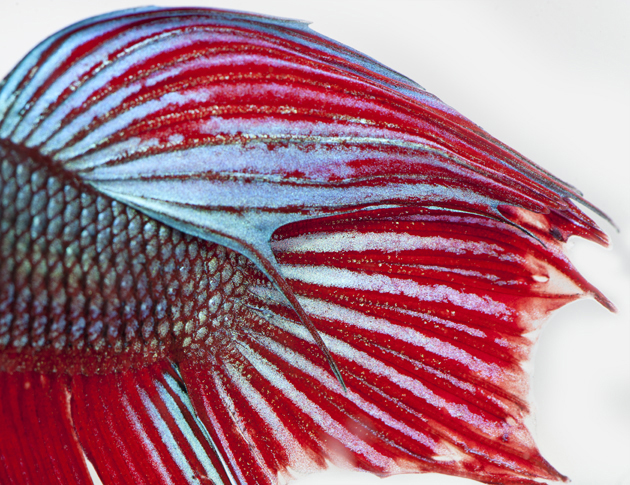
Behavior
By puffing out and flaring their opercula (gill flaps), the Siamese fighting fish attempts to appear more impressive. Both sexes do this, due to a variety of reasons. For males, it may be because of courtship or because they are trying to intimidate rivals. For females, flaring has been known to establish a pecking order among other females and for flirting. Sudden movements and changes in their environment are also triggers for this behavior. Male bettas are known to be very aggressive. In fact, the fish will even respond aggressively to their own reflections in a mirror or the side of an aquarium.
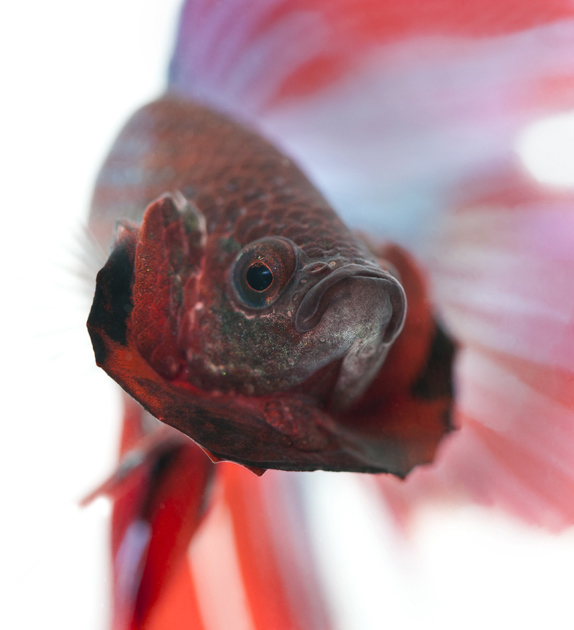
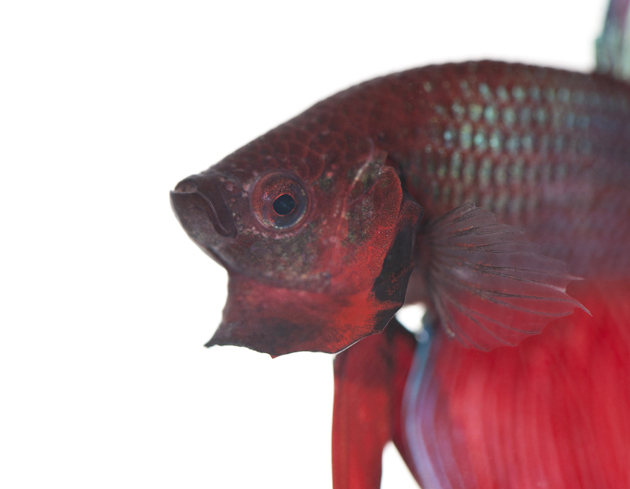
Equipment & Set up
These images were shot using the following equipment:
-
Nikon D700
-
Nikon Bellows
-
Various Nikon & Olympus Thimble Lenses
-
Nikon Flash
-
Fiber Optic Lights
-
Tripod

Resources
www.wikipedia.org/wiki/Betta_fish
http://www.bettafishcenter.com/Betta-Origins.shtml
About & Contact
Daniel Albert Jones.
4th year student at Rochester Institute of Technology.
Pursuing a degree
in Biomedical Photographic Communications.
All images by Daniel Jones. Any questions, concerns, or requests to use images please contact via email
Email: daj9497@rit.edu
Websites: daj9497.cias.rit.edu/361 | danielalbertjones.tumblr.com